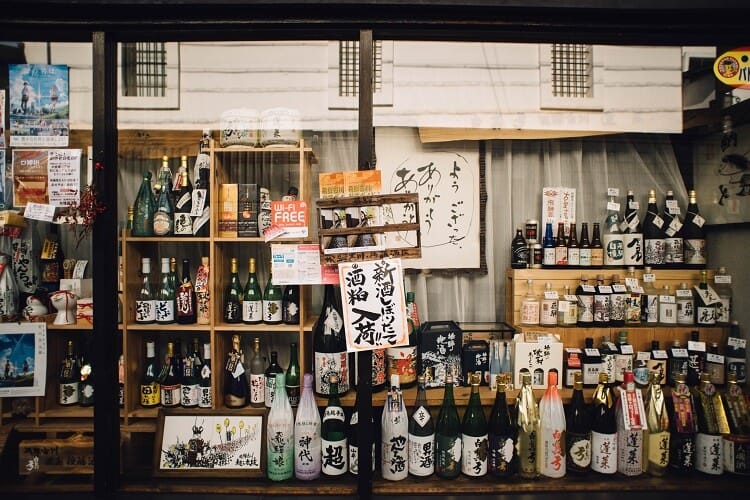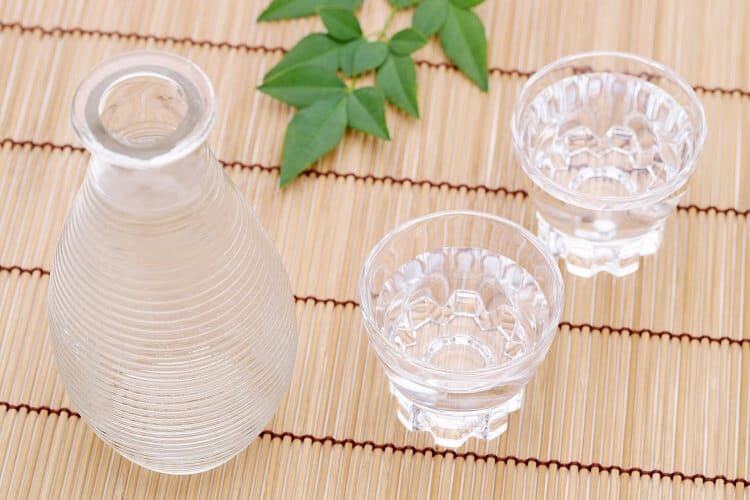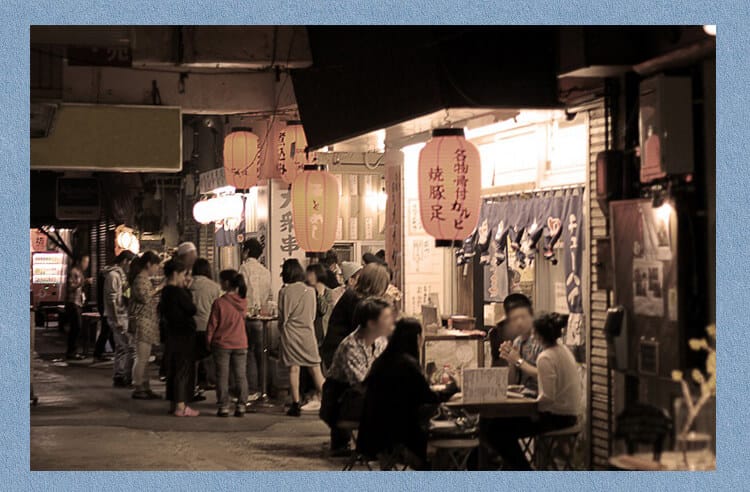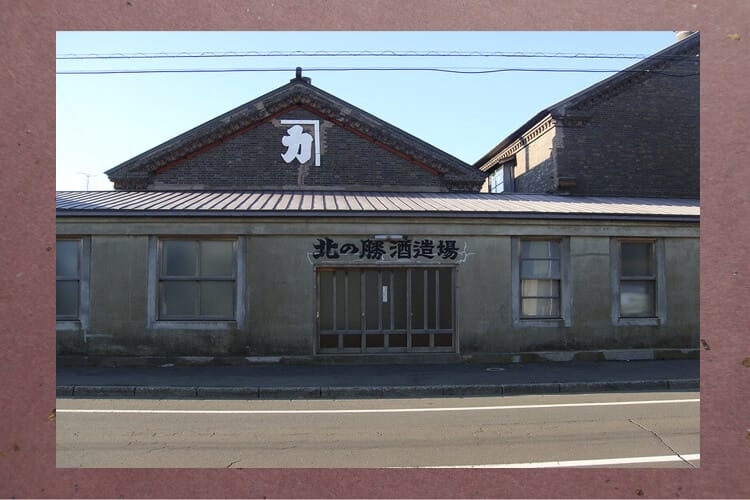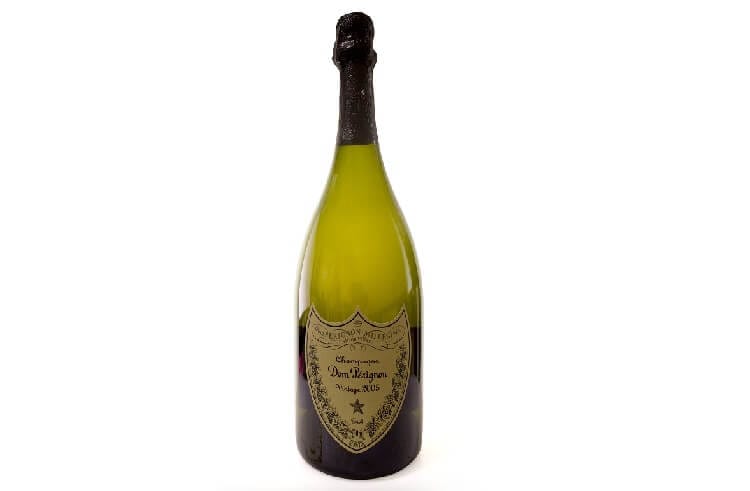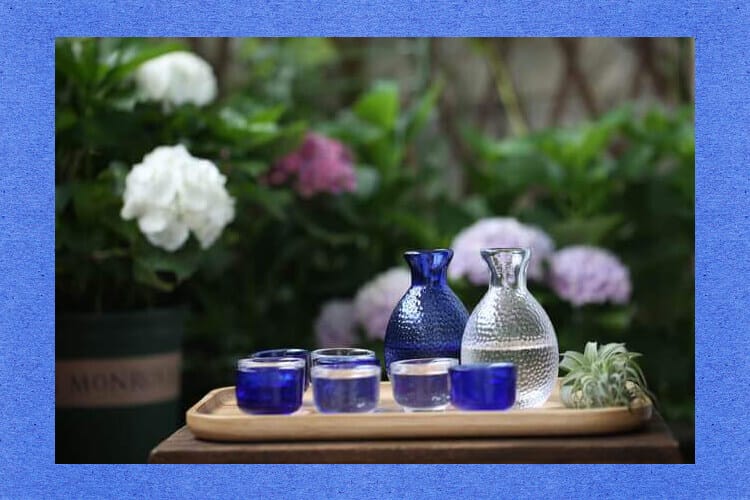
Rumor Koji enzyme among women interested in diet and beauty health. It seems that there are many people taking supplements, but did you know that koji enzymes are also contained in the sake that is close to us? Even better, sake contains other ingredients not only for koji enzymes but also for women to prevent aging and for beauty.
This time,
- Koji enzyme generated in sake brewing
- Unexpected vitamins, minerals and amino acids in sake
- The strongest beauty anti-aging ingredient SAM, α-EG, EGT contained in sake
- A type of sake that contains plenty of koji enzymes
- Recommended brands containing koji enzymes, amino acids and various ingredients
I will explain in detail.
If you don't feel the effect of supplements, please try the Koji Enzyme + α effect by drinking sake.
[Koji Enzyme is Sake] Koji Enzyme is born in the process of making sake
View this post on Instagram
Koji making is the most important process in making sake, as it is said to be “Ikokoji, Nijo (original), Sanzukuri”. The enzyme that is generated when making koji is called koji enzyme.
It has long been thought that Koji and the brewer's skin, which makes sake, are firm and shiny, so Koji may contain effective ingredients for beautiful skin. One of the answers is koji enzyme.
So, in the process of making sake, koji enzymes are born?
“Koji Enzyme and Sake” When does Koji Enzyme occur?
Sake is completed through a complex process. Here, we will explain the koji enzyme using a super simplified diagram of how to make sake.
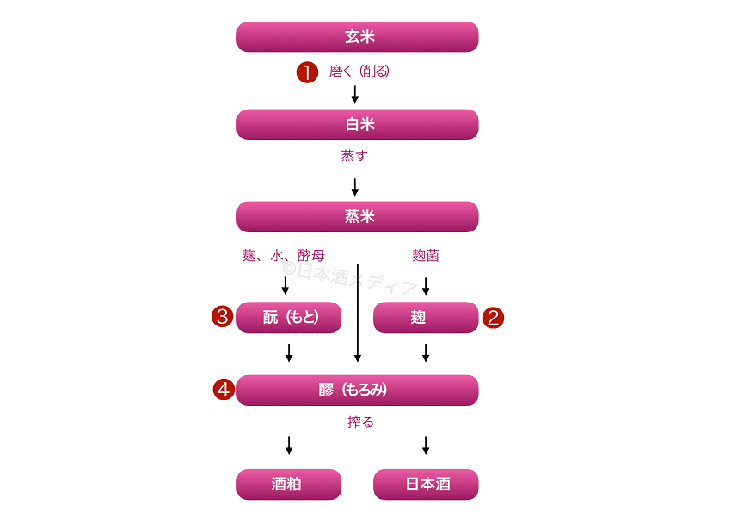
You can't understand anything just by looking at this figure. Now, let's start explaining the figure.
- Unpolished rice contains protein, lipids, and vitamins that are not necessary to make sake, so it is cut away. Express this with the word “polish” (In the figure①).
- Steamed rice is allowed to cool, then koji fungus (also known as Japanese national fungus) is added, the fungus is propagated, and starch and protein are decomposed.In the figure②).
Similarly, koji, yeast, and water are added to the steamed and cold rice to make a strawberry. (In the figure③). - Koji, koji, remaining rice, and waterSaccharifies rice starch and yeast converts the sugar to alcohol"Moromi" can be done (In the figure4).
- Ferment the moromi further until the rice grains disappear.
- Squeeze when rice becomes muddy.
- Japanese sake is the liquid form, and sake lees are squeezed.
"Koji Enzyme and Sake" Koji Enzyme is generated when breeding bacteria
View this post on Instagram
②The koji fungus attached to the rice at this stage penetrates into the rice and tries hard to propagate the fungus.
The nutrients that are needed to increase the number of koji molds are glucose and amino acids. So their ownSecretion of many enzymes to increase the number of fungiThen, it breaks down starch and protein all the time and tries to obtain glucose and amino acids.
At this time,Koji enzyme refers to the enzyme secreted by KojiCall it. When you hear "Koji Enzyme", you get the impression that it is made of a single enzyme.Koji Enzyme is like an enzyme jewelry box that contains many kinds of enzymes, and even vitamins..
[Koji Enzyme is Sake] Types of Koji Enzymes
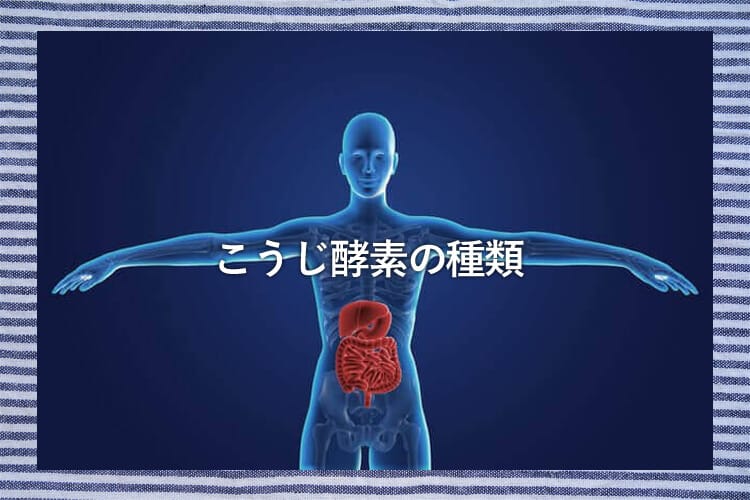
For enzymesDigestive and metabolic enzymes.
Digestive enzymes are enzymes that allow the body to absorb what you eat as nutrients.
Without digestive enzymes, no matter how much nutrient-rich food you eat, it wo n’t be digestedTherefore, the precious nutrients are excreted without being absorbed by the body. However, Koji fungus mainly secretes digestive enzymes, so it will break down the nutrients we have taken into a form that can be taken into the body.
It is said that there are 200 types of enzymes produced by Koji mold, but not all of them have been elucidated so far, so we will introduce the types of Koji enzymes and their functions within the scope examined.
"Koji Enzyme and Sake" The main enzymes currently known and their functions
| Enzyme name | Main work |
| amylase | Starch hydrolase. Decompose starch into maltose and glucose |
| Protease | Protein hydrolase. Decompose proteins into amino acids. Proteolytic enzymes are 28 types* 1The enzyme is |
| Lipase | Lipid hydrolase. Break down fat |
| Sucrase | It is secreted from the villi tip (microchorion) of the small intestine. Decomposes sucrose into glucose and fructose |
| Pectinase | Decompose plant cell wall components and make it easier to enter inside |
| Catalase | Removes reactive oxygen toxins |
Many other enzymes such as esterase, phosphatase, lactase, maltase, salicinase, nuclease, and urease* 2Contains
[Koji enzyme is sake] Koji bacteria produce vitamins and minerals
Koji mold not only secretes enzymes for digestion,B vitamins necessary for metabolism, vitamin E that works as anti-agingWill produce. It also affects physical conditionMinerals such as iron, zinc, magnesium, selenium* 3Also produce.
"Koji Enzyme and Sake" Vitamins from Koji bacteria and their functions
| Vitamin name | Main work |
| Vitamin B1 (Thiamine) |
Convert glucose to energy. If insufficient, it may cause swelling of the feet, fatigue, etc. |
| Vitamin B2 (Riboflavin) |
Growth promoting factor. Insufficiency can cause metabolic disorders that can cause stomatitis, cheilitis, glossitis, etc. |
| Vitamin B3 (Niacin) |
Metabolizes sugar, fat and protein to make energy. Insufficient cause of dermatitis |
| Vitamin B5 (Pantothenic acid) |
Metabolizes sugar, fat and protein. Insufficient cause of dermatitis |
| Vitamin B6 | Metabolizes amino acids. Necessary for healthy hair, skin and teeth. Insufficiency can cause eczema, abnormal brain waves, etc. |
| Vitamin B7 (Biotin) |
Metabolizes sugar. If insufficient, it may cause rough skin or white hair |
| Vitamin B9 (Folic acid) |
Work with vitamin B12 to make red blood cells. Insufficient causes of anemia, heart disease, etc. |
| Vitamin E | Has an antioxidant effect. Insufficient causes such as anemia and arteriosclerosis |
"Koji Enzyme and Sake" Minerals derived from Koji bacteria and their functions
| mineral | Main work |
| 鉄 | Oxygen transport as hemoglobin in the blood. If not enough, it may cause tinnitus, motivation, shortness of breath, etc. |
| zinc | Improves skin, mucous membrane and nail condition. Insufficient causes of taste disorders |
| magnesium | Normalizing bones and making blood harder to solidify. Insufficient cause of osteoporosis |
| selenium | A function that activates antioxidant enzymes. Insufficient cause of myocardial injury |
Koji fungus is an enzyme that digests food, vitamins for metabolism, and minerals that adjust the body's condition.What is it?
[Jiuqu enzyme is sake] Beauty and health ingredients other than Jiuqu enzyme contained in sake
 Some sites that introduce supplements called “Koji Enzyme” or “Koji Live Enzyme” may have the words “Large” or “Diet Effect”. However, you cannot lose weight because you drank koji enzyme supplements. If you just drink supplements and don't eat at all, the story is different, but this time your health is compromised.
Some sites that introduce supplements called “Koji Enzyme” or “Koji Live Enzyme” may have the words “Large” or “Diet Effect”. However, you cannot lose weight because you drank koji enzyme supplements. If you just drink supplements and don't eat at all, the story is different, but this time your health is compromised.
The same is true when drinking sake and taking the koji enzyme into the body.
However, the following changes occur in the body by incorporating the sake koji enzyme.
- Nutrients are absorbed smoothly into the body
- Metabolism is improved thanks to abundant vitamin B group
- Replenishment with minerals improves physical condition
You may expect a certain amount of calorie consumption because the body feels lighter due to the effects of koji enzymes and it becomes easier to work with texture. However, it is impossible to lose weight unless you are thorough about the calorie intake <calorie consumption>, which is the most important diet.
↓
Let's take an example of an office work woman who does not move much in the 30 generation. Assume her weight is 50kg. The calorie she consumes in 1 days can be determined from the following calculation ...
In addition to koji enzymes,
- It brings good quality sleep and is expected to have an effect on Alzheimer"SAM"
- Useful for skin beauty“Α-EG (α-ethyl glucoside)”
- Indispensable to living body"Essential amino acids"
- Useful in case of rain"Free amino acids"
- Make skin that can resist ultraviolet rays“EGT”
It has been found that it works well not only for the present but also for future health and beauty. Let's take a closer look at the above ingredients.
“Koji Enzyme and Sake” produces “SAM” without losing yeast
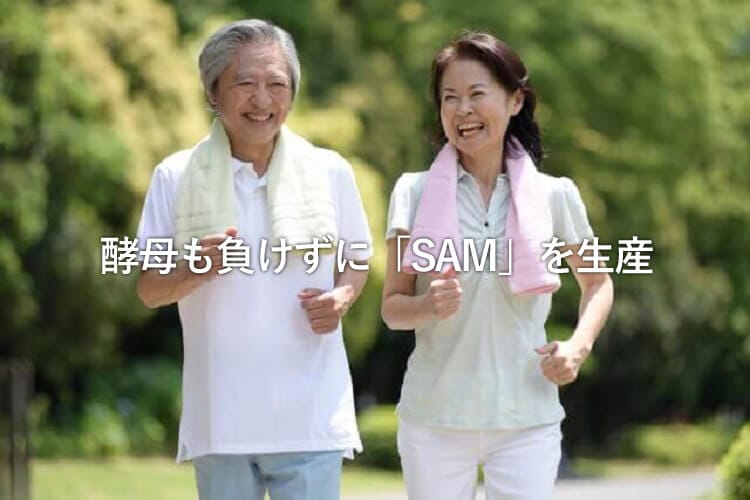
In the process of sake brewingKoji fungi produceEnzymes, vitamins, mineralsHas been introduced, but there are important ingredients that I want to introduce more. One of them is just like Koji fungusYeast added to steamed rice(How to make sake③) Produces SAM (S-adenosylmethionine)* 4.
SAM metabolism research has shown the achievement of healthy longevity
SAM helps prevent and cure alcoholic hepatitis, liver disease, depression, and alleviates symptoms of osteoarthritisIt is a substance known for havingEffect on Alzheimer* 5,Extending human life* 6There are also interesting research announcements that relate to
SAM has also been suggested to be effective for diseases such as antidepressant, liver function, Alzheimer's disease and high-quality sleep, and is expected to be used for breeding SAM high-accumulation strains using sake yeast. Inhibiting or delaying aging leads to prevention of diseases that develop with aging. Since metabolites are highly conserved in higher organisms such as humans, elucidation of the mechanism of lifespan control by metabolites is expected to prevent cancer and diabetes, and may contribute to the extension of “healthy life expectancy”. .
Source: Takashi Ogawa and others“Recommendation of mutant strains for yeast longevity, where methionine metabolism is key”
Don't just be happy if your lifespan is extended.The effect of sake is also effective for female beauty to do.
“Koji Enzyme and Sake”, the component of α-EG (α-ethyl glucoside)

For a long time, I knew that sake was good for the skin.The next morning after drinking sake, the skin is in good condition, and the geisha's skin, which used sake instead of lotion, is glossy..
However, the only components of sake that have been elucidated are water, ethanol, and glucose, which are 3 components.
And as a result of the continued research, what influenced the skinα-EG, the 4 ingredient of Japanese sakeTurned out to be* 7.
In an experiment at Kanazawa Institute of Technologyα-EGCollagen density increases even if you drink or apply, and this effect continues for 8 to 1 weeks if you continue to drink sake for 4 daysThen it is.
"Koji Enzyme and Sake" The amount of "amino acids", "essential amino acids" and "free amino acids" that are active in maintaining the body is overwhelming
For sakeAmino acids are about 2 times that of beer and about 5 times that of wine.It contains.
What are essential amino acids?
It is an amino acid that cannot be produced in the human body, and must be taken from the diet so as not to run out.
Amino acids exist in nature as many as 500, but among them, the amino acids that humans need are 20. Among them9 types of essential amino acids that cannot be synthesizedbut,Alcoholic beverages with a high content of essential amino acids are sake..
* Contains a large amount of amino acidsSake has radiation protection effectHas also been reported* 8.
The following is an introduction to the amino acids contained in sake divided into essential and non-essential amino acids.
* 🍶 mark is an amino acid contained in sake.
| Essential amino acids | Non-essential amino acids |
| 🍶 Valine | 🍶 Glycine |
| 🍶 Leucine | 🍶 Alanine |
| 🍶 Isoleucine | 🍶 Arginine |
| 🍶 Lysine | 🍶 Cysteine |
| Methionine | Asparagine |
| 🍶 Phenylalanine | 🍶 Aspartic acid |
| 🍶 Threonine | 🍶 Glutamine |
| Tryptophan | 🍶 Glutamic acid |
| 🍶 Histidine | 🍶 Serine |
| ー | 🍶 Tyrosine |
| ー | 🍶 Proline |
There are only 3 amino acids that cannot be obtained by drinking sake.
- Essential amino acids: methionine, tryptophan
- Non-essential amino acid: asparagine
Ingredients to supplement the 3 amino acids that are lacking when drinking Japanese sake are spinach, cheese, and nuts. Let's make a simple salad with these ingredients!
Fresh salad with spinach and feta cheese, loabo recipe with nuts
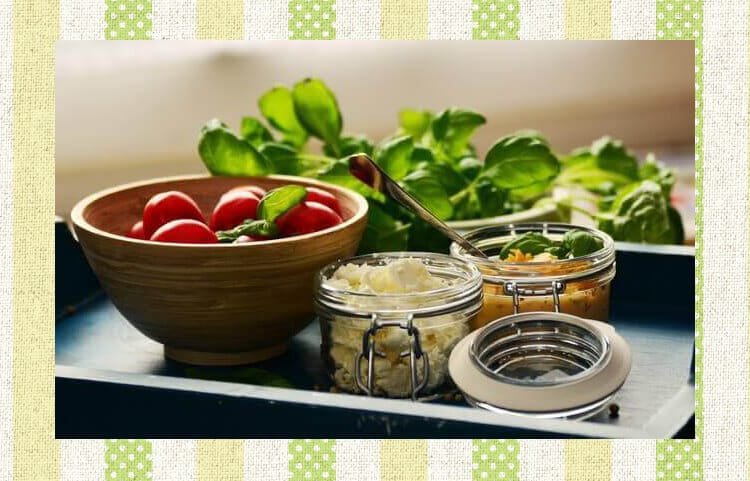
The trick is to choose salty and sticky feta cheese, and finally topped with nuts. It is a volume snack that can be fully satisfied without seasoning or dressing.
Easy to make!
- Boil spinach quickly
- Cut it easy to eat
- Just add cheese and nuts
- Even if you decorate cherry tomatoes on Aya ◎
This is a perfect amino acid countermeasure! Please make it to accompany tonight's supper.
Useful "free amino acids" at the top here
 Free amino acids are a reserve for making new proteinsExistence like.It exists in the cell for emergency and rides in the bloodstream and circulates in the bodydoing.
Free amino acids are a reserve for making new proteinsExistence like.It exists in the cell for emergency and rides in the bloodstream and circulates in the bodydoing.
For example, lack of amino acids in the liver and muscles can cause various problems. However, in that case, if the free amino acid is stocked in the blood and goes around the whole body, the deficient tissue takes it in and creates a new protein.Important functions for living body maintenancedoing.
This free amino acid is very small in beer, and there are no distilled liquors such as shochu and whiskey.
HoweverSake contains free amino acids such as asparagine, arginine, glutamine, serine, glycine, lysine, phenylalanine, tyrosine, leucine, proline, valine, alanine, etc.* 9.
The amount of amino acids in sake varies depending on the sake-brewed rice
View this post on Instagram
The amount of amino acids in sake varies depending on the type of rice brewed.
The most popular rice among brewersSake made from Yamada Nishiki has less amino acidIs a representative of Niigata PrefectureSake made with 500 million stones has many amino acidsIt has been* 10.
Amino acids are an important factor in determining the taste of sake, including hair and skin.Proteins and enzymes that make up about 20% of the body are made of amino acidsConsidering that, it may be necessary to be interested in the rice used in sake for beauty purposes.
↓
🔸 This price for this taste?[5 Recommended Regular Sake] Reviews using Yamada NishikiWith🔸
Daiginjo, Junmai Daiginjo, Ginjo, Junmai Ginjo, Special Honjozo, Honjozo, Junmai Sake, etc. are called specially named sake, and the rice that is used for sake brewing is selected. The top 5 often used in sake-brewed rice is ...
“Koji Enzyme and Sake” Sake “EGT (Ergothionein)” protects the skin with a powerful anti-photoaging effect
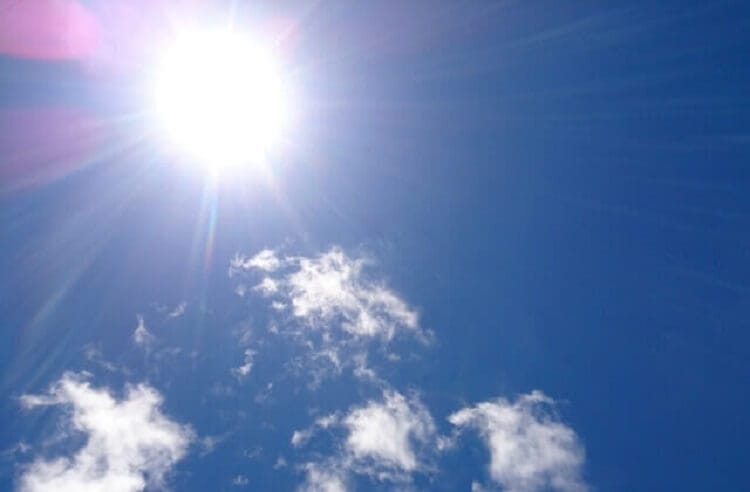 EGT produced by fermentation of rice koji is an amino acid with a strong antioxidant effectKnown as
EGT produced by fermentation of rice koji is an amino acid with a strong antioxidant effectKnown as
Our bodies are subject to oxidative stress every time they are exposed to sunlight, breathe and eat. But it is included in sakeEGT works to remove the stress of the human body affected by free radicals. Among them, the most reliable work for women is
- Prevent wrinkles
- Delays photoaging of skin caused by ultraviolet light
- Prepare skin texture
Such as it will be mentioned.
By the way, if you read so far, most of you may be running to a liquor store for dinner tonight.
[Koji enzyme is sake] What type of sake contains a lot of koji enzyme?
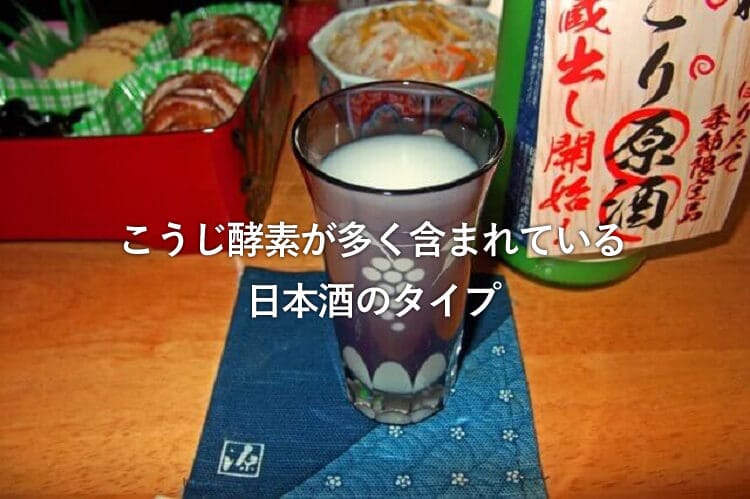
Recent Japanese sake has become a trend of pure rice sake. So what type of sake should a pure rice liquor fan drink?
- I don't fire anythingFresh sake
- Yeast or rice fragments left unsqueezedNiger sake
For pure rice sake that meets the above conditionsAs Koji bacteria are still alive in the bottle, Koji enzymes, amino acids, vitamins, minerals, SAM, α-EG, and EGT are taken into the body.
The name of the product may be written as “freshly squeezed raw sake”, “active nigari” or “active raw sake”. Also for product description
- Koji-derived enzyme precipitates ...
- Yeast and enzymes are alive and fermenting ...
We recommend that you choose sake while referring to it.
There are 3 keywords when choosing a brand that can actually pick up koji enzymes.
- Raw sake (Please note! “Raw storage liquor” and “raw stuffing” are not raw. They are sterilized by heating.)
- Five million stones
- Nigori sake (sometimes called liquor, sasagori, light nigari)
Fresh sake is unburned sake, sake using 500 million stones has a lot of amino acids, and if it is nigari sake, koji remains and fermentation continuesIt is.
↓
🔸 Do you know? "Difference between Nigori Sake and Doburoku" Recommended, snacks, nutrition? 🔸
Nigori sake is made by combining rice, rice koji, and water for fermentation, and then squeezing the resulting moromi in a sake bag. The name varies depending on the squeezing process, even if it is a bit of a word about Nigori Sake ...
So here are some of the hottest 2 stocks.
“Koji Enzyme and Sake” “Jikon Special Junmai Nigorigo Sake”
The sake brewery “Kima” was the opportunity for the small sake brewery “Kiya Masa Sake Brewery” in Nabari City, Mie Prefecture, to become famous nationwide. It is fruity and fragrant, but in this lineup, the brand that makes even a nigolist woman become mellow is "Nikoku Special Junmai Nigosei".
“Meta-Kai” is a Zen sect that does not stick to the past, does not worry about the future, just looks at the present moment and lives seriously, and then the future opens itself. Words.
As the teaching suggests, this innocent sake made by seriously unskilled young Mr. Tsuji has a silky touch, plump rice sweetness, gorgeous aroma, and a faint swooshing feeling.
The raw material rice is 66% of the five million stones suitable for sake brewing and 34% of Yamada Nishiki. It seems to be able to take plenty of amino acids!
→Click here for the Amazon Pure Special Rice
↓
🔸 Was that so!A list that shows the types of complex sake at a glance 🔸
Freshly stored liquor, freshly stuffed and fresh sake all have the word “raw”, but the only sake that has n’t been fired is fresh sake…
"Koji Enzyme and Japanese Sake" A special award-winning class taste "Daiginjo [Hakuryu Honsei] freshly squeezed raw sake"
View this post on Instagram
For those who say pure rice sake is a little ... how about the dry Daiginjo brewed by Niigata's long-established “Hakuryu Sake Brewery” and a special limited sake “Shibori Fresh Namahara”?
Sake with a refined, smooth taste and a crisp luxury taste expresses the status of those who drink. It's a great way to thank gourmets who don't drink anything except Daiginjo and special treats for themselves who work hard every day.
On the rock is recommended in summer. Please have the best experience with the comfort of the exhibition class.
* Only 1 books are available. Please hurry.
→Click here for Amazon Daiginjo Hakuryu squeezed fresh raw sake
Summary of [Koji Enzyme is Sake]: If you want to take Koji Enzyme with Sake, it is recommended to use “Nuru-mochi” or less or “Cold”

Most enzymes die between 42 and 65 ° C. On cold days, you can easily understand the feeling of warmth and warmth.Temperature below lukewarmIt is recommended to drink at.
↓
Well, the amount to drink, according to Kanazawa Institute of Technology,50cc daily for collagen densityHowever, it seems that Japanese sake fans will hear that “That level is not enough”.
Please enjoy the beauty and health essence contained in sake while maintaining the proper amount.
Reference site
(1) Yohei Yamagata, Department of Applied Biochemistry, Faculty of Agriculture, Tokyo University of Agriculture and Technology"Proteolytic enzyme of Aspergillus"Biotechnology Volume 89
(2) WG CREWTHER"ENZYMES OF ASPERGILLUS ORYZAE"CSIRO PUBLISHING
(3)"Food composition database"Ministry of education
(4) Haruyuki Ito “Characteristics of Sake Yeast: Nutritional and Brewing Characteristics”Liquor Research Institute
(5) Remington R et al. "Efficacy of a vitamin / nutriceutical formulation for moderate-stage to later-stage Alzheimer's disease: a placebo-controlled pilot study."NCBI
(6)“Promoting Amino Acid Metabolism for Long Life-S-adenosylmethionine Metabolism is the Key to Extending Life”The University of Tokyo
(7) Takayuki Bogaki “Development of ethyl-α-D-glucoside fermentation production method and research on new moisturizing function and effect on fibroblasts”Kanazawa Institute of Technology
(8) Yukio Takizawa and others"Radiation protection effect of sake"J-STAGE
(9)"Quantitative analysis of free amino acids in alcoholic beverages"Japan Science and Technology Foundation
(10)"Study on the fate and umami of amino acids during sake fermentation"Hyogo Prefectural Industrial Technology Center

